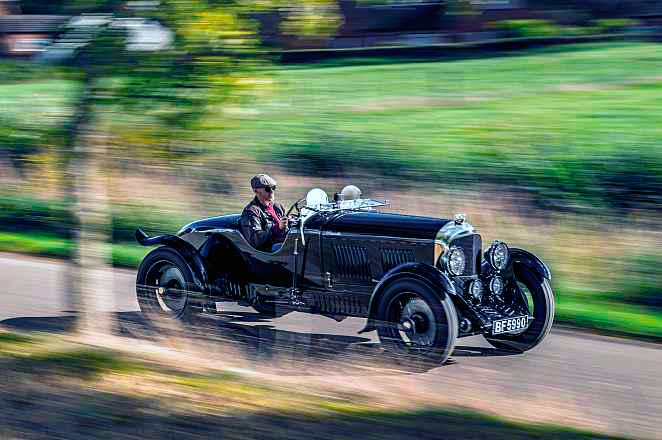
Short and sweet Bentley Roadster Built in the style of Woolf Barnato’s personal roadster, this short-chassis Bentley has been discreetly modified for long-distance touring Words Mark Dixon. Photography Tim Andrew. Bentley Hot Rod Driving a 5.3-litre Woolf Barnato homage.
Vintage Bentleys are not the easiest cars to drive. Every one of them seems to have its individual quirks, and even the specialists who work on them day in, day out will admit that the gearboxes can be ‘challenging’ to operate. Which, of course, is all part of their charm. To a point.
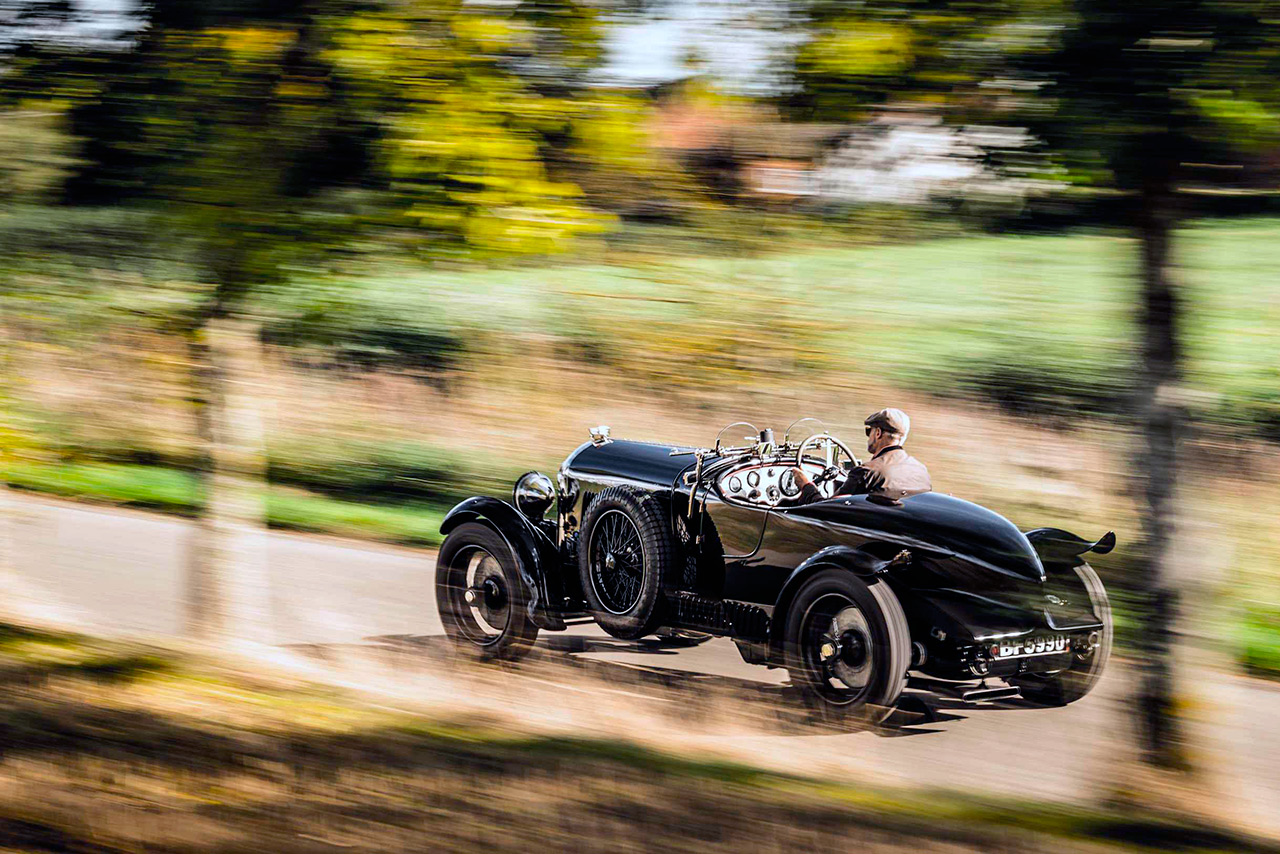
That’s why leading Bentley specialist Tim Cresswell of VBE Restorations decided to build himself a vintage Bentley that was just a little kinder to the driver on a long run – that’s a long run as in the USA’s Colorado Grand classic rally, or the Peking-Paris. It would be a car that WO himself would recognise in all major respects, but with a number of subtle tweaks to improve the driving experience – among them, a 5.3-litre engine and an overdrive gearbox. Oh, and a unique boat-tail body, based on the one-off car built for ‘Bentley Boy’ Woolf Barnato.
The car that inspired Tim was a supercharged 4½ Litre, chassis 3909, bodied by Gurney Nutting and delivered to Barnato in July 1930. It looked (and still does, over in the USA where it resides) unusually rakish for a Bentley of the vintage era, having deep side valances to conceal the chassis, which were ornamented with raked-back louvres that also feature on the bonnet sides. Its helmet-type wings have been described by historian Clare Hay as ‘almost provocative’ because of the way they kick up at the rear. ‘It’s so unique, so exotic-looking,’ enthuses Tim about the Barnato car. ‘But I didn’t want to build a replica of it – and I couldn’t, because the chassis I was starting with is from a 3 Litre, 9ft 9½in wheelbase, whereas Barnato’s car had the blower Bentley’s 10ft 10in wheelbase.’
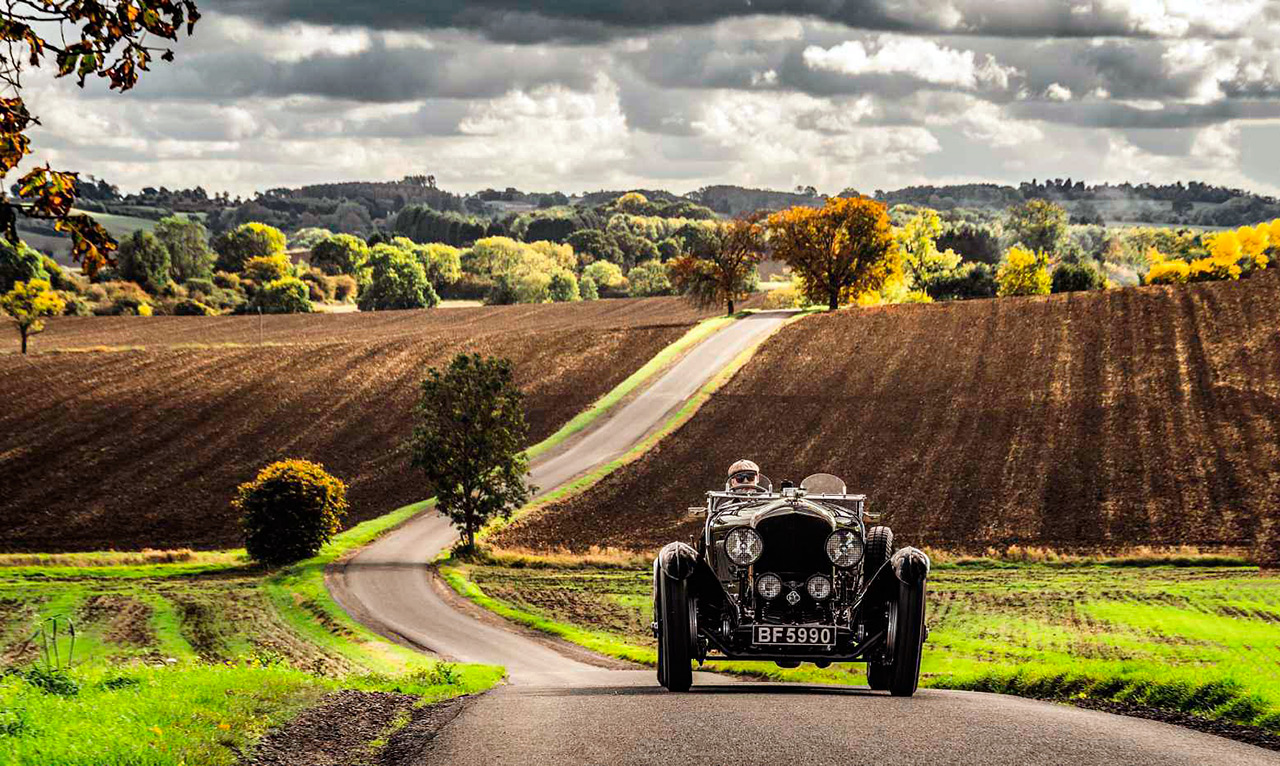
Tim had the remains of a 3 Litre to work with; something decrepit enough that he felt permissible to modify without causing too much upset in Bentley circles.
‘Originally I was going to rebuild it with a standard Vanden Plas touring body, but I became progressively more interested in making something really special, and that’s what led me to think about the Barnato car. As far as I know, no-one has recreated that body style on a vintage chassis.
‘However, because I was starting with a shorter chassis, I didn’t want the body to end up looking too stumpy. I approached a designer friend, Cliff Ruddell, who had known my father at Jaguar – Cliff was involved with the XJ40 and XJ220 – and we worked together on the design. Personally, I think we’ve ended up with a car that’s even better than the Barnato original.’

Burbling away outside the VBE workshops, warming up in the chill of a fine winter’s day, Petronella certainly looks a handsome machine. Petronella? ‘That was my grandmother’s name on my father’s side,’ explains Tim with a grin. ‘She was an actress who used to hang around with a group of playboys in the 1920s, competing in beach races with Bugattis and the like. “Petronella” was her stage name and my father always wanted to name a car after her. After dad died in 2017, it seemed the right thing to do.’
Tim and Cliff have done a fine job with the lines of this car. The Barnato original had a dickey seat in its tail; by dispensing with that, and building on the shorter 3 Litre chassis, VBE has created a compact and powerful-looking roadster that must surely be one of the most attractive versions of a WO Bentley ever produced. Possibly the most attractive. ‘Being a late example of a vintage Bentley, the Barnato roadster had quite an Art Deco appearance about it, which we’ve sexed-up by exaggerating the flaring tips of the rear wings, bringing the wings in tighter over the wheels, and making the bonnet line as flat as possible – more like a Speed Six than a 3 Litre or 4½,’ says Tim.

‘To help us achieve this, we mapped out the whole body with Computer Aided Design. That allowed us to see exactly what it would look like before we started shaping metal. The wings were particularly hard to get right, because we wanted them to wrap as closely around the wheels as possible, which is not easy when you’re dealing with the long-travel suspension of a vintage Bentley.’
Although the body was designed using the latest technology, it was made in a traditional manner – at least, semi-traditional, according to Tim. ‘The timber frame is laminated, to achieve the curves while retaining strength,’ he explains. ‘Each thin lamination was laid around metal formers, then another one added, glued and clamped, and so on. It’s resulted in a frame that’s incredibly strong but still fairly light – if not quite as light as I’d hoped! But it is remarkably stiff; so much so that I had to devise some chassis mounts that would allow for a certain amount of movement, so that the chassis could flex. Otherwise the handling of the car would have been ruined. The body framing is so strong, however, that if a modern car ran into it, I doubt it would crack.’

Over this frame was wrapped an alloy body, made on a traditional English Wheel and painted by local specialist Greg Howell of Southam Bodies. ‘We had help with specific jobs for which we didn’t have the necessary tool – the louvres on the valances and bonnet sides, for example, and the helmet wings – but I’d estimate that 80% of the car was made in our workshop,’ claims Tim. ‘Besides making car bodies, we do all our own engine work other than line-boring and cylinder boring. The problem is that it’s so hard to find people with the right skills – I’d hate to lose them.’
There’s much more to be said, but Petronella is fully awake now and eager to be off, so let’s take a break from the talking and find out how she moves. ‘If you’ve driven other vintage Bentleys, you’ll be amazed how easy this one is to drive,’ encourages Tim. Oh great; no pressure, then.
First task is to get behind the wheel without putting a palm-shaped dent in that freshly built alloy body. You can either place your left hand – carefully – on the cockpit surround, stand on the driver’s seat and ease yourself down; or, more elegantly, open the passenger’s door and slide across. Either way, you’ll find yourself sitting up high, sighting down that long bonnet through a skimpy aeroscreen, and with plenty of elbow room thanks to the cutaway body side. The seats are on sliding runners, too, which is a relief for the tall of limb.

In front of you is – by WO Bentley standards – a relatively ‘blingy’ engineturned dashboard that’s peppered with the usual fighter-aircraft array of switches, buttons and dials, including a soup-platesized revcounter that reads up to a heady 4500rpm. What you need to find first is the ignition switch panel: pull out the pair of tiny brass knobs at the bottom to energise the twin coils, and then a matching knob at the top to switch on the ignition. Retard the ignition using one of the two levers on the steering wheel boss – the other is for setting the hand throttle – and you’re good to go.
Press the starter button to the left of the switch panel and, after a couple of fast churns on the starter – a modern, bespoke and high-torque unit – the engine harrumphs into life and settles to that familiar Bentley chunter. With its loping beat, it sounds like an aristocratic hot rod; and that’s not too far from the truth, since the original 3 Litre engine has been built up to 5.3-litres capacity.
‘The beauty of the Bentley engine,’ shouts Tim above the gurgling of Petronella’s exhaust, ‘is that it is a modular design. You have a crankcase, a monobloc with integral cylinder head, and a valve chest on top. WO used the same crank centres for all his engines, so that a 4.5 Litre has the same centres as a 3 Litre or an 8 Litre. This car is in effect a straight-six 8 Litre with two cylinders lopped off – hence 5.3 litres.
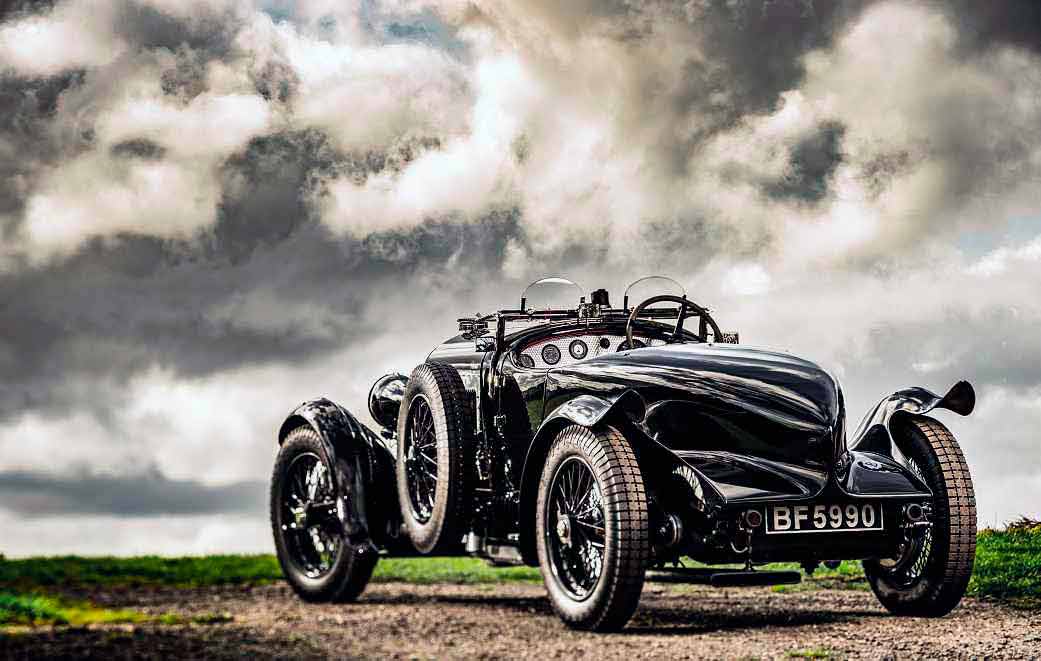
‘All the big non-reciprocating parts are original Bentley,’ he continues, ‘with their internals replaced by high-spec forged items. Other than a conversion to shell bearings from whitemetal, the biggest changes are to the crankshaft and flywheel. Original Bentley cranks were not counterbalanced, but this one is semi-counterweighted to offset a massively lightened flywheel. That’s maybe a quarter the weight of a standard one!’
Later I’ll learn that the carburettors are post-war SU H6s, as fitted to Jaguars, and preferred over the bronze Bentley originals because they work more efficiently and can be tuned for extra power; that the camshaft is standard 4.5 Litre – ‘No one has designed a better cam than WO himself,’ avers Tim; that there’s a motorbike alternator nestling by the bulkhead, geared-up to compensate for the comparatively low speed of the camshaft that drives it, and more. Basically, the engine has been built to go the distance, without losing the essence of what makes it a Bentley.
For now, I’m more concerned about getting to grips with that infamous gearbox – a C Type casing with D Type internals, I’m told, for more evenly spaced gear ratios. This gearbox is worked by a right-hand floor ’change that operates with the clunking precision of a railway signal box lever. Is it hard to use? Well, let’s put it like this: it does become easier as the car warms up…
Considerable experimentation reveals the following. You need to shift fairly early from first to second, using low-to-moderate revs, and double-declutching. Second to third, you move the lever as quickly and smoothly as you can, changing up at rather higher revs, but without double-declutching – and your shift must be accurately zig-zagged up, right, and up again across the gate. Third to fourth needs a straight but deliberate pull, not fast, not slow: fluff it and there’s no second chance.
Sounds horrendously difficult? Actually, it’s not. It just takes some miles of practice (and preferably without the car’s owner sitting alongside you). After a while, you get used to the car and the car gets used to you, and you find yourself making completely silent changes as second nature. Then, of course, you start getting cocky, mis-time a ’change and have to stop and start again…
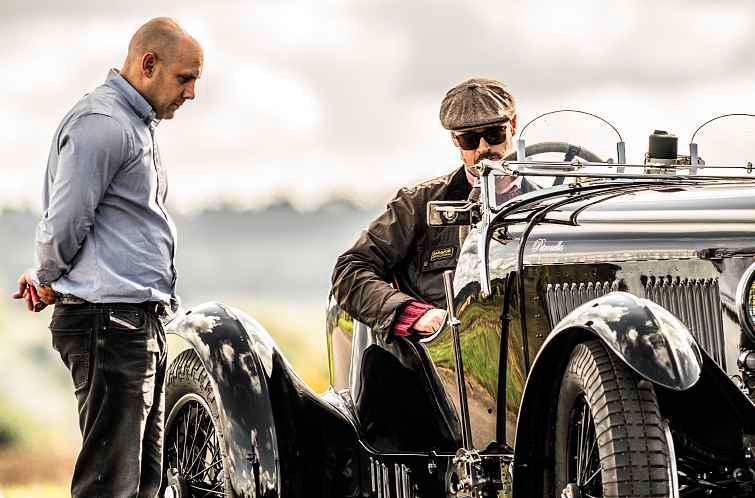
Even limiting the revs to 2400rpm on this freshly built engine is no hardship, because it’s massively torquey and is geared to about 2200rpm at 70mph – which it achieves thanks to a modified Laycock electric overdrive. Tim reckons it should be good for 120mph or so when fully run-in. You can feel the might of the engine as you accelerate, translated by a slight vibration through the floorboards, although the car itself is remarkably taut and rattle-free.
Really, your speed is constrained more by the road surface than anything else. The Bentley has custom alloy friction dampers all-round – paired at each corner, as on the works racers – but those big axles can get caught out by potholes and throw you offline if you’re not careful. Fortunately, the comparative lightness of the steering will help you catch it: the casing is 3 Litre but the internals are 4.5-spec, so there are more turns lock-to-lock but they take less effort.
What it all adds up to is a sense of freedom and exhilaration. The car feels alive, and so do you – you’re sitting high and surrounded by fresh air, with only a minimal aeroscreen between you and the horizon, while your ears are being serenaded by the drainpipe gurgle of a 5.3-litre four-pot. It’s the embodiment of all that’s enjoyable about motoring: an experience that’s challenging enough to be interesting, without being excessively hard work.
The more you delve into this car’s build, the more surprises it reveals. We haven’t yet mentioned the brakes, which are hydraulically operated rather than actuated by rods; or the modern propshaft with conventional universal joints – plus the spare prop that can be mounted under the floorboards, in case the overdrive gives trouble on a long journey.
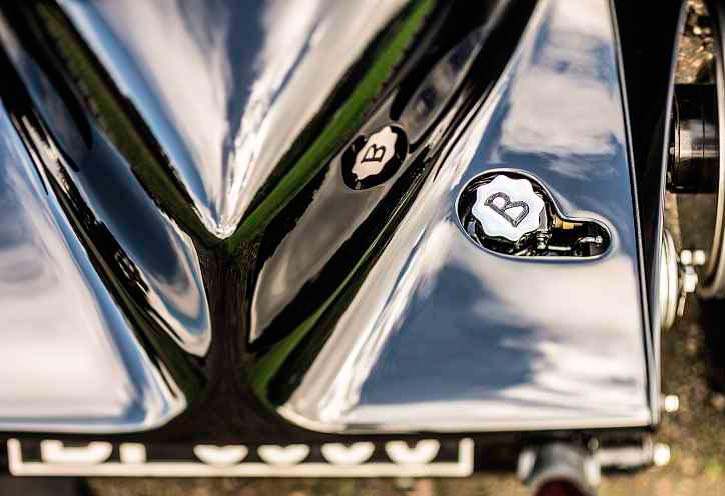
Then there are the original instruments that have been fitted with modern relays to protect their delicate circuits, and the aftermarket Cibié headlamps suitably disguised by vintage stoneguards; the enlarged 17-gallon fuel tank that’s fitted with an electric pump as well as an Autovac; the access hatches installed to make checking gearbox and diff’ oil levels so much easier… you get the idea.
There’s one mod that even Tim can’t quite bring himself to make, however. ‘I did toy with the idea of a nitrous oxide kit,’ he admits, ‘and went so far as to talking with a firm called Wizards of NOS! They reckoned the Bentley engine would be ideal for nitrous, because it has a strong bottom end yet relatively low cylinder compression ratio, and it’s a monobloc design, which means no problem with blowing head gaskets. But I don’t think the vintage Bentley world is quite ready for that, just yet.’
Tim would be delighted to hear from clients interested in realising their own vintage car visions; see www.vbe-restorations.co.uk.
TECHNICAL DATA FILE SPECIFICATIONS 1926 Bentley 3/5.3 Litre
Engine 5300cc four-cylinder, OHC, 16-valve, two SU H6 carburettors
Power c200bhp @ 3500rpm / DIN
Transmission Four-speed manual plus overdrive, rear-wheel drive
Steering Worm-and-wheel
Suspension Front and rear: beam axles, semi-elliptic leaf springs, paired friction dampers
Brakes Hydraulically operated drums
Weight c1200kg
Top speed c120mph
0-60mph c10sec





